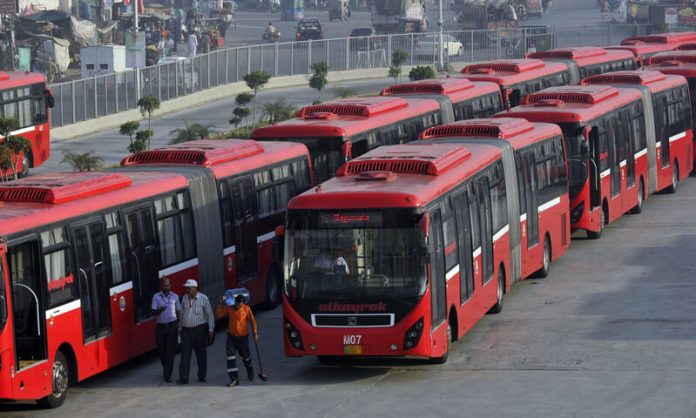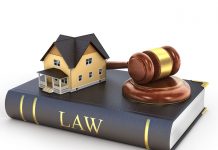This article is written by Preeti Pallavi Jena, from the School of law, KIIT University, Odisha. This article talks about legal aspects regarding the public property along with its preservation, punishment, and remedies.
Table of Contents
Introduction
The term property originated back in the late 13th century from an Angli-Norman French variant of the word propriety, from the Latin words proprietas and proprius. Property means it is an entity that belongs to someone or something, and it may be an attribute as a whole or component of a said thing. Property means possession, it plays a vital role in human life because it is next to impossible to live without the use of material objects which constitute the subject matter of property. The other thing closely related to property is the concept of ownership, the two are mutually interdependent and one cannot continue to exist without another. As per the current scenario, the term property is often used in a wider sense. It includes all the individual rights a person has, which relate property to a person’s life, liberty, and reputation. In an economic and political sense, the property is primarily of 3 types on the basis of ownership namely private property, public property, and collective property. A title or a right to ownership is used to establish the relation between the property and the person, which in turn assures the owner of the property the right to use the property in any way that the person deems fit. In this article, our focus will mainly revolve around public property.
Public property is the property dedicated to public use. Example: the road we drive on, the electricity we use, public hospitals, playgrounds, government offices, etc. These are built using public money. It’s not like private property, this kind of property is owned collectively by the population of a state. This property’s interest is vested in the welfare of the state, rather than a particular individual or a community.
Theories of Property Rights
The term property is complete to contain everything an individual has and can move to one more individual voluntarily. Some may even characterize the word property as “a legitimate relationship” between three individuals. This is very crucial to the very idea of the property that the individual who holds the property has each option to bar someone else from access to the property which is endorsed by the State. The following theories are:
Natural Law theory
As per Natural Law Theory, the property is dependent upon the guideline of Natural explanation. This rule is derived from the idea of things. The supporters of this hypothesis are Pufendorf, Locke, Grotius, and Blackstone. Grotius expressed that all the things in this world were initially not having any owner but by the time anybody who got involved first or wanted to capture it turned out to be the owner.
Labour theory
The most influential personality in the field of property rights was John Locke. He quoted that, “man owns himself”, by extension he meant that man owns everything he produces. His famous theory argued that if a man mixes work with nature, then the man will own the end product produced. This suggested that a person is entitled to the complete product of their labour. In a general meaning, he suggested that society should encourage labour and the property should be divided according to one’s productivity. However, it has been criticized by Professor Harold Laski for his argument that labour doesn’t produce the property. All it does is act as a means to earn property.
Metaphysical theory
This theory was put forward by Kant and Hagel. Kant said that a property is said to belong to an individual when the person is so deeply connected to the property that if one uses it without the very person’s consent, then the person will be injured. Hagel said that a property is an object on which an individual has the liberty to exercise his will. This theory is based on theoretical assumptions and not reality. Hence, this theory had to undergo a lot of criticism.
Historical theory
This theory was put forward by Bentham. According to this theory, private property came to existence after a long process that primarily involves 3 stages. First was the natural possession which was independent of the law, the second was juristic possession and finally came the concept of ownership.
Psychological theory
This theory was put forward by Bentham. This theory states that the concept of property came into existence as a result of the avaricious nature of humans. From prehistoric times, every individual has had the desire to own material things. Bentham rightly pointed out that property is just a conception of mind having no visible lineament.
Basic principles and directions for managing the public property
Public trust doctrine
This was the main principle of public property. It is the duty of the state to protect the resources for the public property. Previously this doctrine was limited to hunting, boating but now it checks the management of the resources for public use. This doctrine gave 3 restrictions:
- Some resources are stored for the public by the government.
- No one can sell these as they are considered to be the gift of nature.
- These properties need to be maintained properly and individuals are not allowed to cross their limits.
Landmark case: MC Mehta v. Kamalnath, 1997
The public trust doctrine came for the first time in this case’s judgment. Here, a PIL was filed against Mr Kamalnath on how he could have allowed SPAN Motel company to construct a hotel near the river Beas in Himachal Pradesh and also permit them to change the course of the waterway for the development. The development was moved towards the land which was taken on a 99 years rent from the public authority. It was permitted by the service just as the gram panchayat of that zone. The high court held that ” the public trust is more similar to a request for the state to utilize the public property for public purposes’.’ It is the obligation of the state to ensure the climate, lakes, and public legacy and it tends to be possibly renounced in an uncommon situation when it is conflicting with the public trust. The court said that these are natural resources and need to be protected at any cost. Hence, no private ownership can be given on that.
Legislations in India for preserving public property
The centre home minister proposed new rules for The Prevention of Damage to Public Property Act,1984 that stop people from damaging public property while disturbances. The new rules that are made will be followed by the recommendations of Justice K T Thomas committee and by the Fali Nariman committee by Supreme Court when they deal on this issue.
Justice K T Thomas introduced 2 amendments:
- The police officers can arrange for people to make videos of the damage that is caused to public property.
- The PDPP Act contains an arrangement to make the heads of the organization, which calls the immediate activity, blameworthy of abetment of the offence.
These recommendations were accepted by the court. And many more guidelines were also formed for preventions.
Guidelines
- The coordinator will meet the police to survey and amend the course to be brought and to set down conditions for a march or protest.
- All weapons, including blades, knives, lathis, and so forth will be prohibited.
- An undertaking is to be given by the coordinators to guarantee a quiet walk with marshals at each significant intersection.
- The police and State Government will guarantee videos of such fights to the greatest degree possible.
- In the event that turns vicious, the official in-control will guarantee that the damages caused are videographed through private administrators.
Nariman committee’s recommendations
- Agitators would be made carefully subject to the harm, and remuneration would be gathered to “make good” the harm.
- Where people, individually or together, are involved in the protest that brings about harm to private or public property, the people who have caused the harm, or were essential for the dissent or who have coordinated it will be considered to be carefully subject for the harm so caused, which might be evaluated by the standard courts or by any exceptional method made to authorize the right.
- High courts should arrange suo motu activity, and set up an apparatus to examine the harm caused and grant pay any place mass destruction to property happens because of fights.
While any protest is being conducted, the commonplace gets affected sooner than the rest like the public transport buses, auto-rickshaw transport, etc in cases of hartals. Our government made amendments to the PDPP Act to restrict people from causing damages to public property.
Penal sections against damage to public property
According to the prevention of damage to Public Property act, 1984:
- Section 3 says that, if anyone attempts to do any mischief or harm to the public property will be punished for a term of 5 years and with a fine. The public property here means any house, installations, water supply, power, light, transportation, etc.
Public property under this Act incorporates “any structure, house, establishment or other property utilized regarding the creation, flexibly of water, light, force or energy, any oil establishment, sewage works, any mine or processing plant, any methods for public transportation or of broadcast communications, etc”.
- Section 4 says that mischief that creates damage by fire or any such substance. Any person who attempts or does so shall be punished with an imprisonment term of 1 year and have the possibility of getting it extended to a term of 10 years with a fine depending on the level of the damage caused.
- Section 425 of the Indian Penal Code puts forth a definition of ‘mischief’ as when any person intentionally or knowingly causes damage or wrongful loss to the public property or any person can be said to commit ‘mischief’.
Rights of the owner
Real estate owners have many legal rights. There are majorly 5 rights of property ownership.
1. Right to possession
The person who holds the title of the property also possesses the property. For example: if I want to buy a house from Mr X. Once I paid the amount for the house, the title of the house shifts in my name. And now I have all the rights to the property.
2. Right to control
The owner of a property tries to control the use of the property according to him. It basically manages the property. He takes care of who, when, and how will the property be used.
3. Right to exclusion
This right says that no other person can trespass your property, except if there is any warrant on you or if you provide land beside you to someone and the only path to go to his house is by your house, then you need to allow for that.
4. Right to derive income
The owner has the right to give his property or house in a rent to any other person for business purposes.
5. Right to disposition
It gives the owner a right to transfer his ownership over the property to another person as per his choice. This can also be dealt with by a will of his and they will have the power to sell and use it in any way they like to.
Legal remedies
The government spends a lot of money to maintain public properties. Remedies are given under the constitution law under Directive principles of state policy (DPSP) and Article 19 of fundamental rights.
Mohammad Shajauddin vs. State of UP, 2011
In the case of Mohammad Shajauddin vs. The state of UP, the Allahabad High Court said that, if any public property is damaged by acts of the political party, then the police can register a report on him by mentioning the name of the person and the party he belongs to.
The high court said the government will assign a person who is capable enough or has the ability to access the damage caused and collect the claims of the public who have suffered losses due to this violence caused by the political parties.
If any person who needs to pay or compensate the other person because he caused loss to the other person, couldn’t pay the amount then it will be collected as arrears of land revenue. In this type of case, the court said that a high-level committee can go through it to solve such problems.
Conclusion
We know that India is a developing country, and the misuse of any public property will in turn slow down its progress. Preservation of public property is a major concern in India and needs to get enough attention from the government as well as the citizens, to uplift the condition of the society. It is something we own collectively as the people of India. We must develop a sense of responsibility towards public property as it will help us bring a happy civic life to the people of our nation. We must also contribute towards the development of proper public institutions by paying our taxes regularly and develop a sense of duty to conserve the public properties of our great nation.
References
- https://www.legalserviceindia.com/articles/ptdoc.htm
- https://blog.ipleaders.in/right-to-property-in-india
- https://www.jatinverma.org/analysis-of-damage-to-property-act
- https://iksa.in/india-ink/how-can-we-prevent-destruction-of-public-property/2553/
LawSikho has created a telegram group for exchanging legal knowledge, referrals and various opportunities. You can click on this link and join:
 Serato DJ Crack 2025Serato DJ PRO Crack
Serato DJ Crack 2025Serato DJ PRO Crack











 Allow notifications
Allow notifications



